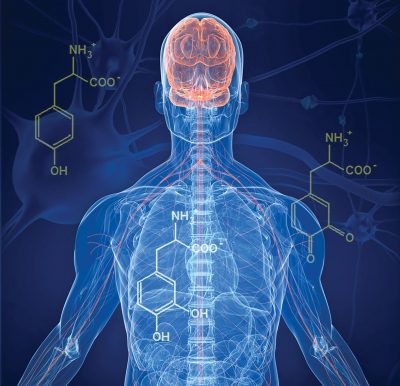×


We have detected your country as:
Please click here to go to the USA website or select another country from the dropdown list.
by: Tali Aronsky, Hebrew University of Jerusalem
 Parkinson’s disease is the second most common neurodegenerative disease and affects more than 10 million people around the world. To better understand the origins of the disease, a team of researchers from the Hebrew University of Jerusalem and Penn State College of Medicine have developed an integrative approach, combining experimental and computational methods to understand how individual proteins may form harmful aggregates or groupings that are known to contribute to the development of the disease. They said their findings could guide the development of new therapeutics to delay or even halt the progression of neurodegenerative diseases.
Parkinson’s disease is the second most common neurodegenerative disease and affects more than 10 million people around the world. To better understand the origins of the disease, a team of researchers from the Hebrew University of Jerusalem and Penn State College of Medicine have developed an integrative approach, combining experimental and computational methods to understand how individual proteins may form harmful aggregates or groupings that are known to contribute to the development of the disease. They said their findings could guide the development of new therapeutics to delay or even halt the progression of neurodegenerative diseases.
Alpha-synuclein is a protein that helps regulate the release of neurotransmitters in the brain and is found in neurons. It exists as a single unit, but commonly joins together with other units to perform cellular functions. When too many units combine, it can lead to the formation of Lewy bodies, which are associated with neurodegenerative diseases like Parkinson’s and dementia.
Although researchers know that aggregates of this protein cause disease, how they form is not well understood. Alpha-synuclein is highly disordered, meaning it exists as an ensemble of different conformations or shapes rather than a well-folded 3D structure. This characteristic makes the protein difficult to study using standard laboratory techniques, but the research team used computers together with leading-edge experiments to predict and study the different conformations it may fold into.
“Computational biology allows us to study how forces within and outside of a protein may act on it,” said Nikolay Dokholyan, professor of pharmacology at the College of Medicine and Penn State Cancer Institute researcher. “Using experiments performed in Professor Eitan Lerner’s laboratory at the Hebrew University of Jerusalem’s Biological Chemistry department, a series of algorithms accounts for effective forces acting in and upon a specific protein and can identify the various conformations it will take based on those forces. This allows us to study the conformations of alpha-synuclein in a way that is otherwise difficult to identify in experimental studies alone.”
Using leading-edge experiments, the researchers found that some shapes of alpha-synuclein are surprisingly stable and last longer than milliseconds. They said this is much slower than estimates of a disordered protein that constantly changes conformations.
“Prior knowledge showed this spaghetti-like protein would undergo structure changes in microseconds,” Lerner said. “Our results indicate that alpha-synuclein is stable in some conformations for milliseconds, slower than previously estimated.”
“We believe that we’ve identified stable forms of alpha-synuclein that allow it to form complexes with itself and other biomolecules,” said Jiaxing Chen, a graduate student at Penn State’s College of Medicine. “This opens up possibilities for the development of drugs that can regulate the function of this protein.”
Chen’s lead co-author, Sofia Zaer, alongside colleagues at the Hebrew University of Jerusalem, used a series of experimental techniques to verify that alpha-synuclein could fold into the stable forms the simulation predicted. The research team continues to study these stable conformations as well as the whole process of alpha-synuclein aggregation in the context of Parkinson’s disease.
“The information from our study could be used to develop small molecule regulators of alpha-synuclein activity,” Lerner said. “Drugs that prevent protein aggregation and enhance its normal neurophysiological function may interfere with the development and progression of neurodegenerative diseases.”
Excerpt from a press release by Tali Aronsky, Hebrew University of Jerusalem
Photo Credit: Click on photo to see photo credit
All logos and trademarks in this site are property of their respective owner. All other materials are property of Bridges for Peace. Copyright © 2025.
Website Site Design by J-Town Internet Services Ltd. - Based in Jerusalem and Serving the World.